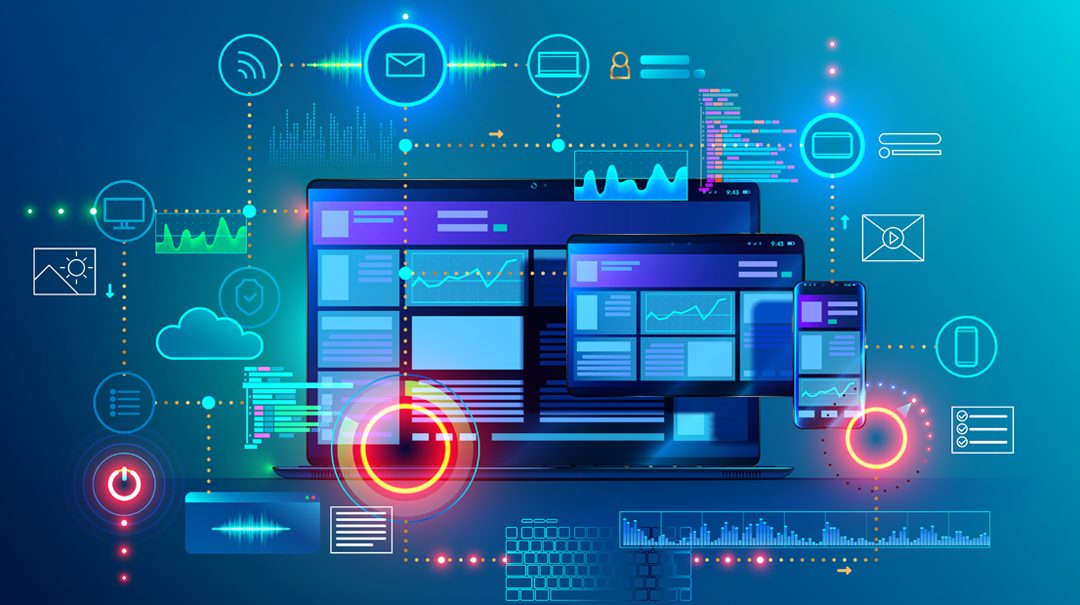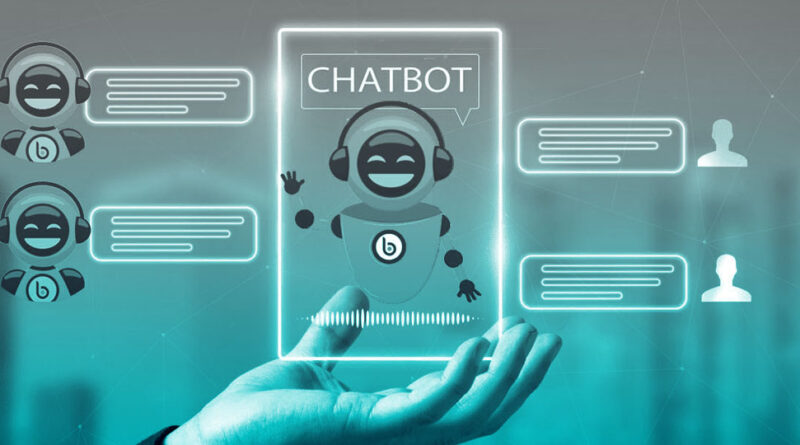Top 10 Ways Enhancing Patient Data Collection.
Top 10 Ways AI Medical Chatbots are Transforming Software as a Medical Device in Patient Data Collection
Artificial intelligence (AI) is rapidly changing the healthcare landscape, particularly in how patient data is collected and managed. AI Medical Chatbots have emerged as powerful tools, significantly enhancing the capabilities of Software as a Medical Device (SaMD). These chatbots streamline and improve patient data collection processes, making them more accurate, efficient, and accessible.
1. Automated Patient Data Entry
One of the most significant contributions of AI Medical Chatbot to patient data collection is their ability to automate data entry processes. Traditionally, healthcare providers manually input patient information into electronic systems, a time-consuming task that is prone to errors. These errors can stem from simple human mistakes such as typos or from more complex issues like misinterpretation of patient responses.
AI chatbots alleviate this burden by automating the data collection process. During patient interactions, chatbots can gather vital information, such as symptoms, medical history, and demographic details, directly from the patient. The chatbot then automatically records this information in a structured format, reducing the chances of errors. This automation not only frees up valuable time for healthcare providers to focus on patient care but also ensures that the data collected is accurate and complete.
Moreover, the efficiency of AI-driven data entry means that healthcare providers can handle a higher volume of patient data without sacrificing quality. This scalability is particularly beneficial in large healthcare settings or during peak periods when the demand for services is high.
2. Real-Time Data Collection
In healthcare, timing is everything. The ability to collect and access patient data in real-time can be the difference between life and death in critical situations. AI Medical Chatbots excel in this area by providing real-time patient data collection capabilities.
These chatbots interact with patients and collect data on the spot, which is then instantly available to healthcare providers. This immediate access to up-to-date information allows doctors and nurses to make informed decisions quickly, especially in emergency scenarios. For instance, if a patient experiences a sudden change in symptoms, the AI chatbot can prompt the patient for more information, update their records in real-time, and alert the healthcare team.
Real-time data collection also enhances the accuracy of patient records. Since the data is recorded as soon as it is provided, the risk of losing or misinterpreting information is minimized. This capability is particularly useful in fast-paced environments like emergency rooms, where every second counts and the accuracy of information is paramount.
Furthermore, real-time data collection supports continuous monitoring of patients, especially those with chronic conditions. AI chatbots can regularly check in with patients, gather new data, and ensure that their healthcare providers are always informed about their current health status.

3. Enhanced Patient Engagement
Engaging patients in their healthcare journey is crucial for successful treatment outcomes. AI Medical Chatbots play a pivotal role in enhancing patient engagement by providing an interactive and user-friendly platform for patient data collection.
Patients often find it easier to communicate with AI chatbots because these tools are available 24/7, respond instantly, and can guide them through the process of sharing their health information. For example, a chatbot can ask patients specific questions about their symptoms, medical history, or current medications in a conversational manner, making the interaction less intimidating than traditional forms or surveys.
This level of engagement not only makes patients feel more comfortable but also encourages them to provide more detailed and accurate information. When patients feel heard and understood, they are more likely to share relevant details that might otherwise be overlooked. The chatbot can also provide immediate feedback or suggestions, such as reminding patients to take their medication or scheduling follow-up appointments.
Enhanced patient engagement through AI chatbots leads to more comprehensive data collection, which is essential for developing personalized treatment plans. It also empowers patients to take an active role in managing their health, improving adherence to treatment protocols and overall health outcomes.
4. Consistent Data Collection Processes
Consistency in patient data collection is vital for ensuring that healthcare providers have reliable and comparable information across different settings. AI Medical Chatbots contribute to this consistency by standardizing how data is collected and recorded.
In traditional settings, different healthcare providers might use varied methods and terminologies to document patient information. This variability can lead to discrepancies in patient records, making it difficult to coordinate care across multiple providers. AI chatbots solve this problem by adhering to standardized protocols and using consistent medical terminology, regardless of the patient’s location or the provider they interact with.
For instance, a chatbot will use the same set of questions and coding practices for every patient it interacts with, ensuring that the data collected is uniform. This uniformity is crucial when multiple healthcare professionals need to collaborate on a patient’s care, as it eliminates confusion and reduces the likelihood of errors.
Additionally, standardized data collection processes enable more effective use of data analytics. When the data is consistent, it is easier to analyze and draw meaningful insights, which can improve patient outcomes and inform future healthcare strategies.
5. Data Collection Through Natural Language Processing (NLP)
Natural Language Processing (NLP) is a powerful technology that allows AI Medical Chatbots to understand and process human language. This capability is particularly useful in patient data collection, where patients often provide information in unstructured or conversational forms.
NLP enables AI chatbots to interpret patient inputs accurately, regardless of how they are phrased. For example, a patient might describe their symptoms in a way that doesn’t directly align with medical terminology. An AI chatbot equipped with NLP can analyze the patient’s words, extract the relevant medical information, and record it in a structured format that healthcare providers can easily understand.
This ability to handle unstructured data means that chatbots can engage with patients in a more natural and conversational manner. Patients are not required to use specific medical terms or follow rigid formats, which makes the interaction more comfortable and accessible for them.
Moreover, NLP enhances the chatbot’s ability to ask follow-up questions based on the patient’s responses, ensuring that all necessary information is collected. This dynamic interaction improves the completeness and accuracy of patient data collection, leading to better-informed medical decisions.
6. Personalized Data Collection
Personalization is a key factor in effective healthcare, and AI Medical Chatbots excel in providing personalized patient data collection experiences. By considering individual patient needs and medical histories, these chatbots can tailor their interactions to collect the most relevant data.
For example, an AI chatbot can access a patient’s previous medical records and use that information to ask specific questions about their current condition. If the patient has a history of diabetes, the chatbot might focus on symptoms related to blood sugar levels or inquire about recent dietary habits. This targeted approach ensures that the data collected is highly relevant to the patient’s specific health concerns.
Personalized data collection also improves the patient experience. Patients are more likely to engage with a system that understands their unique needs and provides relevant, tailored questions. This approach not only makes the data collection process more efficient but also enhances the quality of the data gathered, leading to more accurate diagnoses and more effective treatment plans.
7. Integration with Electronic Health Records (EHR)
Integration with Electronic Health Records (EHR) is essential for the seamless flow of information within healthcare systems. AI Medical Chatbots are designed to integrate smoothly with EHR systems, ensuring that the patient data collection process is connected directly to a patient’s overall health record.
This integration means that data collected by the chatbot is automatically transferred to the patient’s EHR, where it can be accessed by healthcare providers in real-time. There is no need for manual data entry or transfer, which reduces the risk of errors and ensures that all relevant information is available to the healthcare team.
Moreover, this seamless integration enhances the continuity of care. As patients move through different stages of treatment or interact with various healthcare providers, their data remains consistent and up-to-date. This continuity is crucial for making informed medical decisions and providing the best possible care.
Additionally, integrated AI chatbots can pull information from EHR systems to provide personalized interactions with patients. For example, a chatbot can use historical data from the EHR to remind patients of upcoming appointments or to follow up on specific health concerns, thereby enhancing patient engagement and compliance with treatment plans.
8. Increased Accessibility for Patients
One of the significant advantages of AI Medical Chatbots is their ability to increase accessibility to healthcare services and patient data collection. By offering chatbot-based interactions, healthcare providers can reach a broader audience, including patients who may face barriers to traditional healthcare access.
AI chatbots are available 24/7, which means patients can interact with them at any time, from any location. This flexibility is particularly beneficial for patients in remote areas, those with mobility issues, or individuals with busy schedules who may find it difficult to visit a healthcare facility during regular hours.
Increased accessibility also encourages more frequent and detailed patient data collection. Patients who might otherwise avoid or delay seeking medical advice can use chatbots to share their symptoms or concerns without the need for an in-person visit. This capability leads to earlier detection of potential health issues and allows for timely interventions.
Furthermore, AI chatbots can offer multilingual support, making healthcare more accessible to non-native speakers. This inclusivity ensures that language barriers do not prevent patients from receiving the care they need or from providing accurate health information.

9. Improved Data Security
Data security is a top priority in healthcare, and AI Medical Chatbots operating within Software as a Medical Device frameworks adhere to strict security protocols to protect sensitive patient information. Ensuring that patient data collection processes are secure is crucial for maintaining patient trust and complying with regulatory requirements.
AI chatbots use advanced encryption methods to secure patient data during transmission and storage. This encryption
ensures that unauthorized individuals cannot access the data, protecting it from breaches or cyberattacks. Additionally, chatbots are designed to comply with healthcare regulations such as HIPAA in the United States, which sets stringent standards for the protection of patient information.
Moreover, AI chatbots can include features such as multi-factor authentication (MFA) to ensure that only authorized users can access or update patient data. This added layer of security is essential for preventing unauthorized access and ensuring that patient records remain accurate and confidential.
By improving data security, AI chatbots help healthcare providers maintain compliance with legal standards and protect patient privacy, which is critical in today’s digital health landscape.
10. Continuous Monitoring and Data Collection
Continuous monitoring is a key advantage of AI Medical Chatbots in patient data collection. These chatbots can interact with patients regularly, collecting data over time and providing healthcare providers with a comprehensive view of a patient’s health.
For chronic conditions like diabetes, hypertension, or heart disease, continuous monitoring is essential for effective management. AI chatbots can check in with patients daily or weekly, asking them about symptoms, medication adherence, and lifestyle factors. This regular data collection helps healthcare providers track the progression of the condition and adjust treatment plans as needed.
Continuous data collection also benefits patients undergoing treatment or recovery. The chatbot can monitor their progress, identify any issues early, and alert healthcare providers if intervention is required. This proactive approach reduces the likelihood of complications and improves patient outcomes.
Additionally, continuous monitoring supports preventive care. By regularly collecting data from patients, AI chatbots can identify early warning signs of potential health issues, allowing for timely interventions that prevent the condition from worsening.
Conclusion
AI Medical Chatbots are revolutionizing Software as a Medical Device by transforming how patient data collection is conducted. From automating data entry to enhancing patient engagement, these chatbots are making the data collection process more accurate, efficient, and secure. As AI technology continues to evolve, the role of AI chatbots in healthcare will only grow, leading to even more advancements in patient care and data management.
Through these ten key ways, AI chatbots are not only improving the efficiency of patient data collection but also enhancing the overall quality of care. Healthcare providers who embrace these technologies will be better equipped to meet the demands of modern healthcare and provide the best possible outcomes for their patients.

